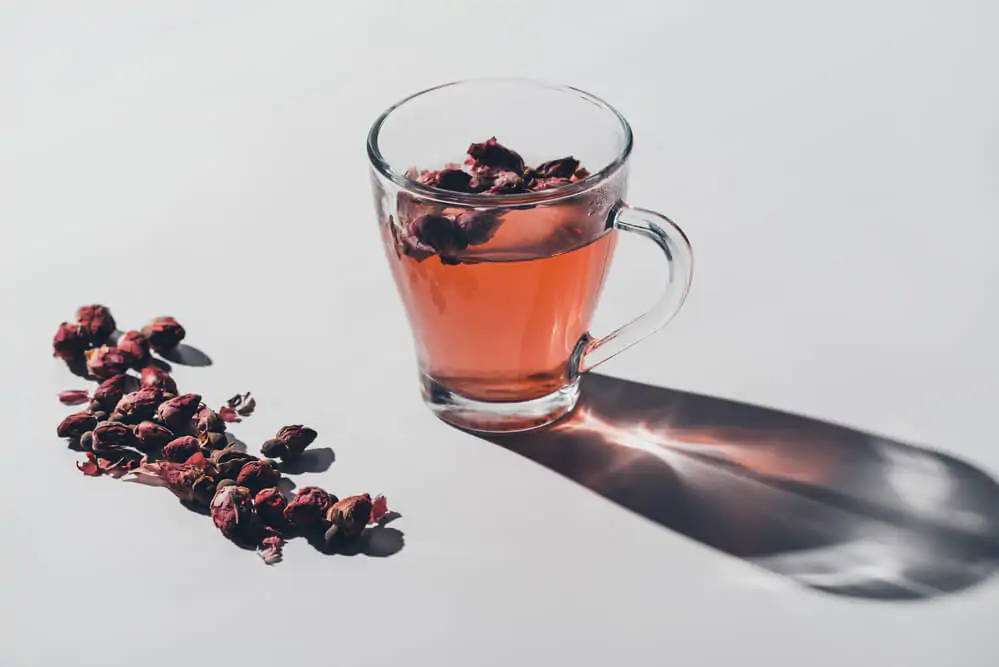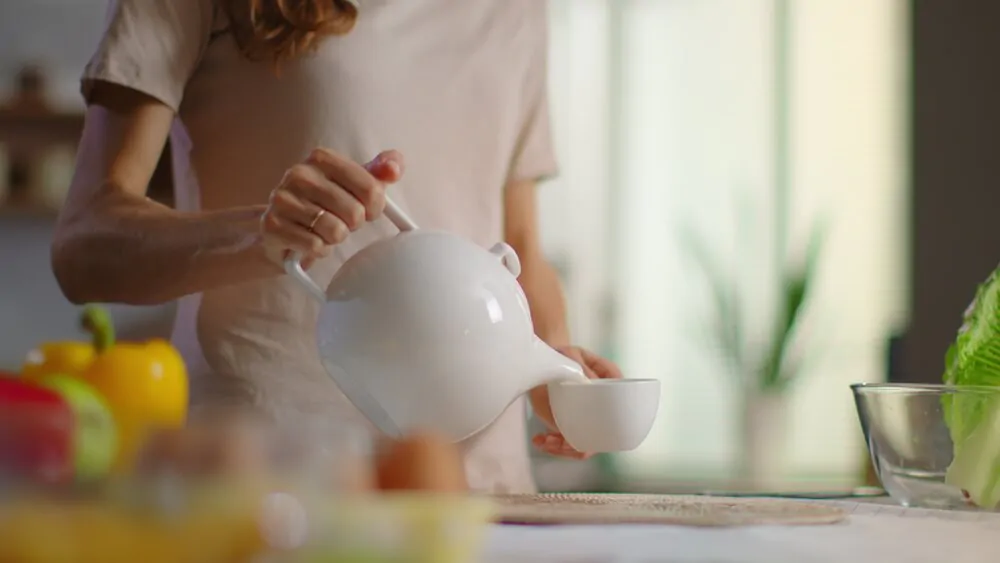What is Red rose tea? Red roses symbolize intense passion, but the red rose tea is something different – a quiet moment you don’t have to share with anyone else.

If you’re a romantic like me, you’ll always have a rosebud or two pressed in between the pages of your favorite Jane Austen book. Gently remove the stem and let the petals rest in hot water. What you’ll get is a cup of red rose tea, an aromatic herbal beverage for the aching heart.
Like the rose flower, red rose tea is delightful in many ways. It’s incredibly easy to make, as it requires nothing more than rose petals or buds and some water, but depending on the recipe, it can go from unpretentious and straightforward to rich and full-bodied.
In any case, red rose tea is a healthy addition to your everyday diet. Here’s everything you need to know, served with sweet biscuits on the side.
Red Rose Tea: A Cup Full of Vitamins
Preparing a cup of tea with rose petals or buds feels exotic. This herbal tea is not a common choice for casual tea drinkers, even though the rose might be the most popular flower in the world. Exotic or not, the rose has been used as a medicine in the Eastern hemisphere for centuries.
Red rose tea is a beloved habit in the Middle East, China, and India.
More importantly, these cultures enjoy roses as part of their culinary arts, adding them to sweets, salads, and jams. Almost all rose species can be enjoyed as food, though not all are pleasant on the taste buds. The prettiest roses are simply too bitter, and that’s poetry.

Here’s another wonderful thing about roses – they are full of vitamins. There’s enough vitamin C, A, and E and iron and calcium in a rose petal to make us a bit healthier and younger-looking – and there are plenty of other benefits to go with that.
Let’s just say this as well – unlike many other types of tea, red rose tea contains no calories whatsoever. It may exude sweetness, but it has no sugar either, so you can savor its taste and enjoy all the benefits without worrying about where it fits in your daily diet.
It’s also caffeine-free, which makes it kind of perfect.
Can Red Rose Tea Boost Your Health?
Every sip of red rose tea is an abundant vitamin infusion that keeps you healthy and hydrated. Thanks to its unique nutritional profile, which contains no sugar, calories, or caffeine, a rose petal boasts a range of beneficial properties that are welcome in a cup of warm tea.
Hydration Is Number One
Every tea can help you keep stressors at bay by replenishing your organism with water. It’s also one of the most powerful metabolism boosters, which allows you to lose weight.
Vitamin C Boosts Immunity
Vitamin C is essential for all infection-related health issues.
That’s why the red rose tea can help you weather the common flu, especially symptoms such as congestion and coughing. However, even if you’re not sick, vitamin C will still work hard on prepping your immune system for the flu season.
Antioxidants Battle Diseases
Getting enough antioxidants in your diet can help you prevent some of the most challenging health issues. Of course, rose petals have no shortage of them. Polyphenols, as they are called, play a crucial part in your body’s effort to maintain a healthy heart, brain, and gut.
Rose Petals for Pain Relief
Red rose tea is plentiful in anti-inflammatory properties as well.
Thankfully, this is excellent news for ladies suffering from painful menstrual cycles. As soothing as it is, this tea can eliminate bloating and ease cramps. According to some studies, it can also fight off PMS-related mood swings and anxiety.
You can even use red rose tea’s anti-inflammatory effects to treat the most painful symptoms of arthritis and other conditions triggered by inflammation.
Laxative Effects and Digestion
This one isn’t very romantic, but it’s undoubtedly useful. In addition to everything else, rose petals also produce a gentle laxative effect that can calm down your stomach and restore your microflora.
How to Prepare a Simple Red Rose Tea

There’s no wrong way of making red rose tea.
For substance, you can use either fresh or dried roses. Unlike rosehip tea, which is prepared with rose fruit, red rose tea requires a few delicate petals or buds. If available, you can also use a mixture of two. Some say the water needs to be boiling – others say it has to be hot.
The specifics of preparing this heartwarming beverage vary from one recipe to another. There’s no definite answer on how long you should wait before you drain the tea, nor how many roses you should steep in water in the first place. You can add honey or other herbs to your liking.
When it comes to red rose tea, there’s only one rule – close your eyes and enjoy it.
